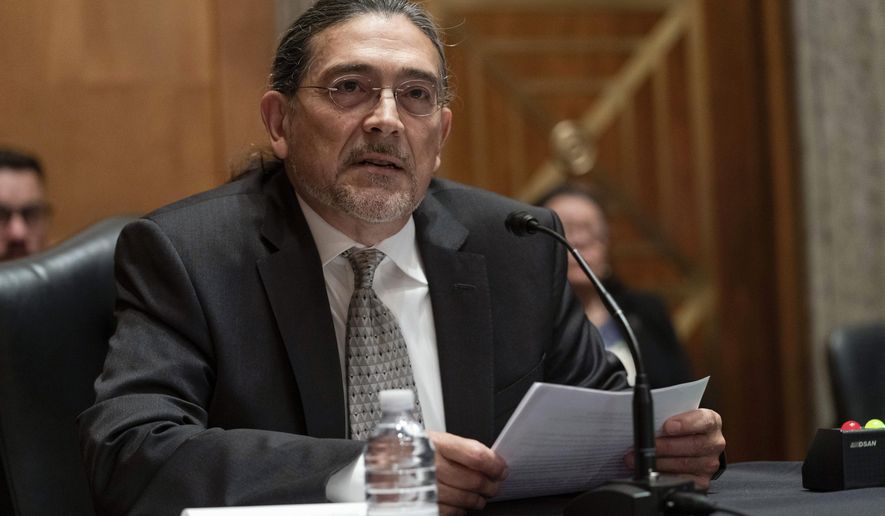The child tax credit helped push a key measure of poverty to its lowest level on record, according to new Census Bureau data Tuesday that signaled just how critical government assistance was to propping Americans up in the second year of the coronavirus pandemic.
Median income remained essentially static in 2021, and the official poverty rate did as well. But the Supplemental Poverty Measure, which adjusts for government assistance like tax credits and stimulus checks, dropped 1.4 percentage points to 7.8%.
For children, who benefitted from the child tax credit, the fall was even more dramatic, from 9.7% to 5.2% — also a record low. Bureau analysts said almost all of that was due to the tax credit.
“It’s a major contributor,” said Liana Fox, an assistant division chief at the bureau.
The data covers President Biden’s first year in office as he tried to put his imprint on the pandemic response.
High-profile yardsticks showed things changed little.
Real median household income was $70,800, down from $71,200, which bureau analysts said was considered statistically equivalent.
The official poverty measure found 37.9 million Americans living below the poverty line, for an official poverty rate of 11.6%. Bureau analysts said that, too, was statistically equivalent to 2020’s number of 37.5 million people and rate of 11.5%.
More Americans were covered by health insurance, the bureau said, with the uninsured rate dipping four-tenths of a percent. The numbers showed a continuing slight shift from private health plans toward government-run plans.
Analysts said that reflects both an aging population able to access Medicare and more people signed up for Medicaid, the federal-state joint program to provide health coverage for poor people. Medicaid was expanded under Obamacare.
Pinpointing the drop in private coverage was trickier, with most categories showing dips that weren’t considered statistically significant. The Obamacare marketplace showed a slight uptick, but that, too, wasn’t considered statistically significant.
The new numbers come from the Current Population Survey, which is taken monthly. The data for those reports were collected in February, March and April.
The income numbers are challenging for the Biden administration, which is battling severe inflation.
But it’s the poverty figures that are likely to draw the most attention, not least because the two key yardsticks point in opposite directions.
The official poverty rate covers earnings and some government assistance such as Social Security and unemployment benefits. But it does not include tax credits, stimulus payments or noncash programs such as food stamps and Medicaid.
Those are accounted for in the Supplemental Poverty Measure, or SPM.
With median income and the official poverty level showing no real change and the SPM showing a significant improvement, that seems to signal that the real driver in American financial well-being last year was because of Uncle Sam’s generosity rather than any improvements in the economy.
The Census Bureau said it can even pinpoint how many people were affected by each government program.
Without last year’s round of stimulus checks, 8.9 million people would have fallen below the poverty line, the bureau calculated. The refundable child tax credit helped 5.3 million people over the line.
Social Security, meanwhile, remains the largest anti-poverty program, lifting 26.3 million Americans over the line — most of them elderly.
On the other side of the ledger, medical expenses drove 4.7 million people below the poverty line, the Census Bureau said.
“The federal government played a vital role in reducing poverty in 2021,” said Elise Gould, senior economist at the Economic Policy Institute.
For more information, visit The Washington Times COVID-19 resource page.
• Stephen Dinan can be reached at sdinan@washingtontimes.com.




Please read our comment policy before commenting.